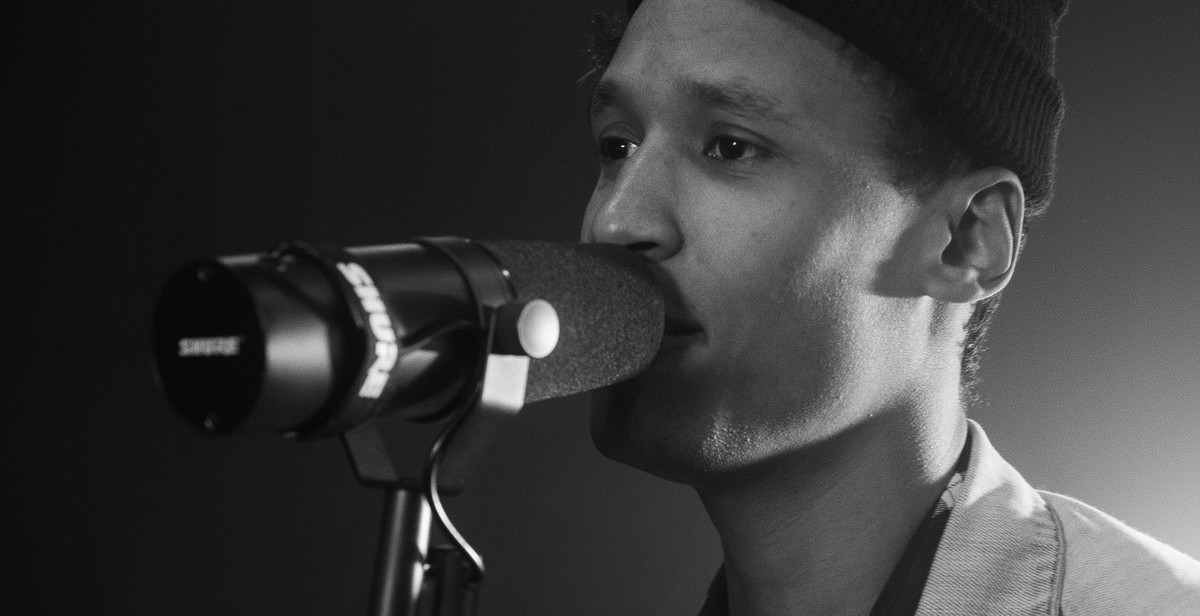How to Sing with Vocal Texture: Adding Character and Variety to Your Voice
Are you tired of singing the same songs with the same style and vocal range? Do you want to add more character and variety to your voice? If so, you are in the right place. Singing with vocal texture is a technique that can help you achieve a unique and interesting sound that will set you apart from other singers.
What is Vocal Texture?
Vocal texture refers to the quality of your voice that gives it a distinct character. It is the way your voice sounds when you sing, including the tone, pitch, vibrato, and other nuances. Adding texture to your voice can make it sound more interesting and engaging, and it can help you convey a wider range of emotions in your singing.
Why is Vocal Texture Important?
When you sing with vocal texture, you can capture the attention of your audience and keep them engaged throughout your performance. It also allows you to express yourself more fully and connect with your listeners on a deeper level. In addition, having a unique vocal texture can help you stand out in the competitive world of music.
How to Add Vocal Texture to Your Voice
There are several techniques you can use to add texture to your voice, including:
- Using vibrato
- Changing your tone and pitch
- Adding vocal fry or raspiness
- Using dynamics and phrasing
- Experimenting with different vocal styles and genres
By incorporating these techniques into your singing, you can create a unique and captivating vocal texture that will make your performances stand out.

Understanding Vocal Texture
Vocal texture refers to the quality and uniqueness of a singer’s voice. It is the way in which a singer manipulates their voice to add character and variety to their performance. Vocal texture can be described as the tone, pitch, and timbre of a singer’s voice.
What is Vocal Texture?
Vocal texture is the way in which a singer adds depth and emotion to their performance by manipulating their voice. It is the unique quality of a singer’s voice that sets them apart from other singers. Vocal texture can be created by altering the tone and pitch of a singer’s voice.
Tone refers to the quality of a singer’s voice. It can be described as warm, bright, dark, or breathy. Pitch refers to the highness or lowness of a singer’s voice. By manipulating their tone and pitch, a singer can create different vocal textures.
Why is Vocal Texture Important?
Vocal texture is an important aspect of singing because it adds character and variety to a singer’s performance. It allows a singer to express different emotions and convey different messages through their voice. Without vocal texture, a singer’s performance can become monotonous and lack emotion.
Vocal texture is especially important in genres such as blues, jazz, and soul music, where the singer’s voice is the main focus of the performance. In these genres, singers often use vocal texture to create a unique and memorable performance.
In addition, vocal texture can also be used to enhance the lyrics of a song. By altering the tone and pitch of their voice, a singer can emphasize certain words or phrases and create a more powerful message.
- Vocal texture refers to the quality and uniqueness of a singer’s voice.
- Vocal texture can be created by altering the tone and pitch of a singer’s voice.
- Vocal texture is important because it adds character and variety to a singer’s performance and allows them to express different emotions.
- Vocal texture is especially important in genres such as blues, jazz, and soul music.
- Vocal texture can be used to enhance the lyrics of a song.
| Term | Definition |
|---|---|
| Vocal texture | The quality and uniqueness of a singer’s voice. |
| Tone | The quality of a singer’s voice, such as warm, bright, dark, or breathy. |
| Pitch | The highness or lowness of a singer’s voice. |

Developing Vocal Texture
Vocal texture refers to the quality of sound in your voice that adds character and variety to your singing. It can be described as the richness, depth, and warmth of your voice. Developing vocal texture involves understanding breathing techniques, doing vocal exercises, using vibrato, and experimenting with dynamics.
Breathing Techniques
One of the most important aspects of developing vocal texture is mastering breathing techniques. Proper breathing ensures that your voice is supported and that you have enough air to sustain long notes. To improve your breathing, try the following exercises:
- Diaphragmatic breathing: This involves breathing from your diaphragm instead of your chest. Place your hand on your stomach and take deep breaths, feeling your stomach expand and contract.
- Counting breaths: Inhale for four counts, hold for four counts, and exhale for four counts. Repeat this exercise several times.
Vocal Exercises for Texture
Vocal exercises are essential for developing vocal texture. These exercises help to strengthen your vocal cords, improve your range, and increase your control over your voice. Here are some exercises you can try:
- Lip trills: This exercise involves blowing air through your lips while humming. This helps to loosen up your vocal cords and improve resonance.
- Tongue trills: Similar to lip trills, this exercise involves blowing air through your tongue while humming.
- Siren: This involves sliding your voice up and down your range. Start low and gradually move higher, then back down again.
Using Vibrato
Vibrato is a subtle fluctuation in pitch that adds texture to your voice. It can be challenging to master, but with practice, you can use vibrato to add depth and richness to your singing. Here are some tips for using vibrato:
- Start with a sustained note and gradually add a slight oscillation in pitch. Practice this until you can do it consistently.
- Experiment with different speeds and widths of vibrato to find what works best for your voice.
Experimenting with Dynamics
Dynamics refer to the variations in volume and intensity in your singing. This is another way to add texture to your voice. Here are some tips for experimenting with dynamics:
- Start with a soft, gentle tone and gradually increase the volume until you reach a loud, powerful tone. Then gradually decrease the volume back to a soft tone.
- Try adding different levels of intensity to your singing, from whispering to shouting.
| Tip: | Record yourself singing and listen back to identify areas where you can improve your vocal texture. |

Adding Character to Your Voice
When it comes to singing, having a unique and distinct voice is essential if you want to stand out. Adding character to your voice can make your performance more engaging and memorable. Here are some tips on how to add character and variety to your voice:
Emphasizing Consonants
Consonants are essential in singing as they help to convey the meaning and emotion of a song. By emphasizing certain consonants, you can add character to your voice and make your performance more dynamic. For example, if you want to convey a sense of urgency or excitement, you can emphasize the consonants “t” and “d” to add a punch to your lyrics. On the other hand, if you want to create a softer, more delicate mood, you can emphasize “s” and “sh” sounds to add a sense of gentleness.
Phrasing and Timing
Phrasing and timing are crucial elements of vocal texture. By playing around with the timing of your lyrics, you can create a more interesting and dynamic performance. For example, you can speed up or slow down certain phrases to add emphasis or create a sense of tension. Similarly, by breaking up your lyrics into smaller phrases, you can add a sense of rhythm and flow to your performance.
Using Vocal Fry
Vocal fry is a technique where you add a creaky, raspy sound to your voice. This technique can be used to add character and texture to your singing. For example, you can use vocal fry to add a sense of grit and intensity to your performance. However, it’s important to use this technique sparingly, as overusing it can strain your voice.
Mixing Head and Chest Voice
Mixing head and chest voice is another way to add character to your singing. By blending these two vocal registers, you can create a more dynamic and versatile sound. For example, you can use chest voice to convey power and intensity, and head voice to add a sense of lightness and delicacy. By mixing these two registers, you can create a unique and distinctive vocal texture.
| Tip | Description |
|---|---|
| Emphasizing Consonants | By emphasizing certain consonants, you can add character to your voice and make your performance more dynamic. |
| Phrasing and Timing | By playing around with the timing of your lyrics, you can create a more interesting and dynamic performance. |
| Using Vocal Fry | Vocal fry can be used to add a sense of grit and intensity to your performance. |
| Mixing Head and Chest Voice | By blending these two vocal registers, you can create a more dynamic and versatile sound. |

Conclusion:
Learning how to sing with vocal texture is an essential skill for any aspiring singer. It’s what sets apart the amateurs from the professionals. By adding character and variety to your voice, you can make your performances more engaging and memorable.
Start by experimenting with different techniques, such as vibrato, growling, and falsetto. Practice regularly to develop your vocal control and range. Remember to warm up your voice before each session to prevent strain or injury.
Another important aspect of singing with vocal texture is understanding the lyrics and emotions behind the song. Connect with the message and convey it through your voice. Use your body language and facial expressions to enhance your performance.
Finally, don’t forget about the technical aspects of recording and mixing your vocals. Use proper equipment and software to capture the best possible sound. Edit and refine your recordings to highlight your vocal texture and bring out the best in your voice.
With these tips and techniques, you can take your singing to the next level and create a unique, memorable sound. Keep practicing, experimenting, and refining your skills, and you’ll be well on your way to becoming a truly exceptional singer.
